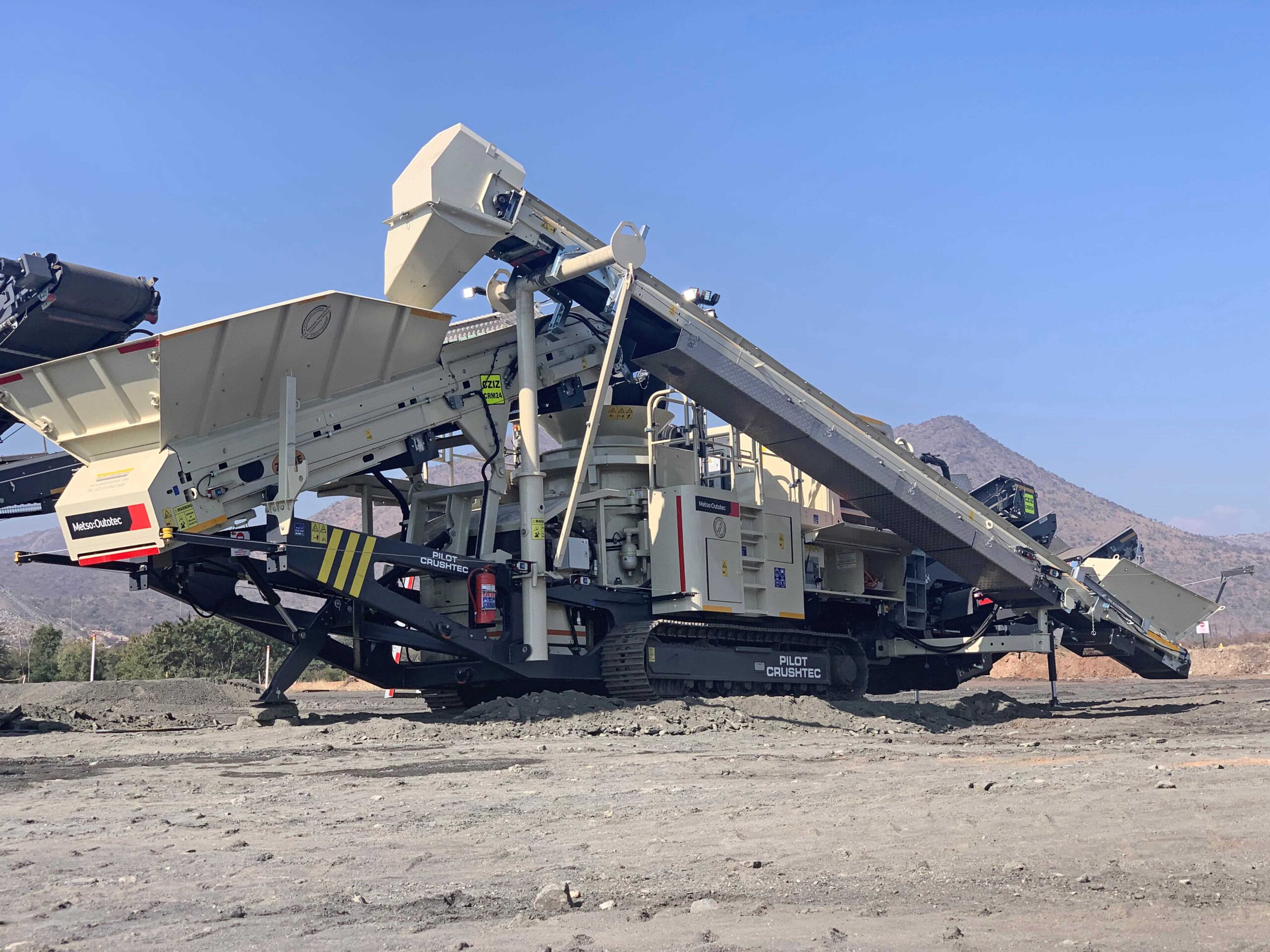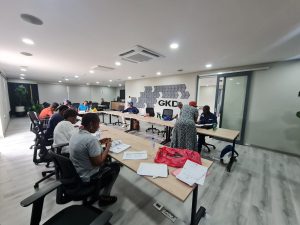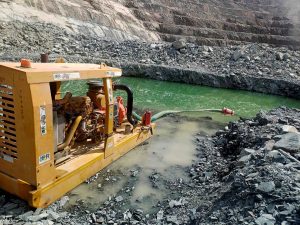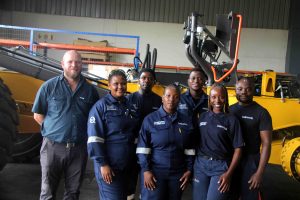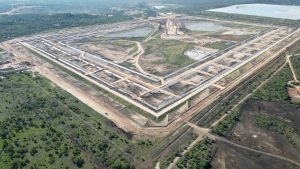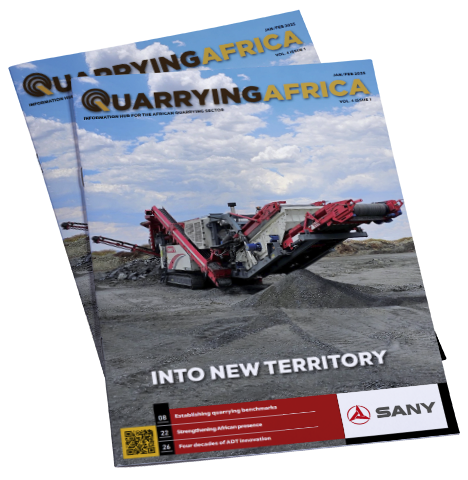Leading mining contractor, Zizwe Opencast Mining has taken delivery of the first Metso Lokotrack LT200HPS supplied by Pilot Crushtec with a hanging screen in southern Africa. The machine has been deployed on a chrome mine in Steelpoort, Limpopo, South Africa.
With productivity high on the agenda in a highly abrasive chrome-processing application, a three-machine train of Metso mobiles – comprising a Lokotrack LT120 jaw crusher, a Nordtrack S2.11 scalping screen and a Lokotrack LT200HPS cone crusher – is making light work of the 200 tonnes per hour (tph) production target.
Joe de Beer, Crushing and Screening Plant Manager at Zizwe Opencast Mining, has been impressed in particular by the new Lokotrack LT200HPS cone crusher, equipped with a hanging screen. By featuring a detachable screen and return conveyor on one tracked chassis, he says, the LT200HPS is basically ‘two machines in one’, thus eliminating double-handling on site.
“The fact that the LT200HPS does the job for two machines was central to our purchasing decision. It features a detachable screen and return conveyor which guides screened oversize material back to the cone crusher. It is essentially a cone crusher, a screen and a conveyor on one tracked chassis,” says De Beer.
Yeshen Achary, Sales Engineer at Pilot Crushtec, explains that Zizwe Opencast Mining was looking for a single unit that could do the job of two machines. “Traditionally, we have always brought the LT200HP™ in a standard configuration. Because cone crushers by their nature are not 100% efficient, the added benefit of having a screen post the crushing chamber is that it allows for recirculation of any oversize material back to the cone crusher,” he says.
This, explains Achary, eliminates the need for another machine to work in closed circuit with the cone crusher. Having a single machine doing the job of two machines offers significant cost benefits for the customer.
“Apart from the obvious capital cost benefit, having the cone and screen on a single chassis means that the machine is powered by a single engine, making one less machine to maintain. Having a closed loop on a single chassis also makes it easy to transport the machine between sites,” concludes Achary.
Francois Marais, Sales and Marketing Director at Pilot Crushtec, explains that the LT200HP now comes in three different configurations. Apart from the standard cone crusher configuration, it is now available with a pre-screen called the HPX, which is placed just before the crushing chamber or alternatively with an overhanging screen called the HPS, located post the crushing chamber.
“In traditional operations, you would need two machines – a cone crusher and a screen – to do the same job done by this single machine. In addition, you would probably have to deploy a minimum of two to three conveyor belts to recirculate oversize material from the screen back to the cone crusher,” concludes Marais.
